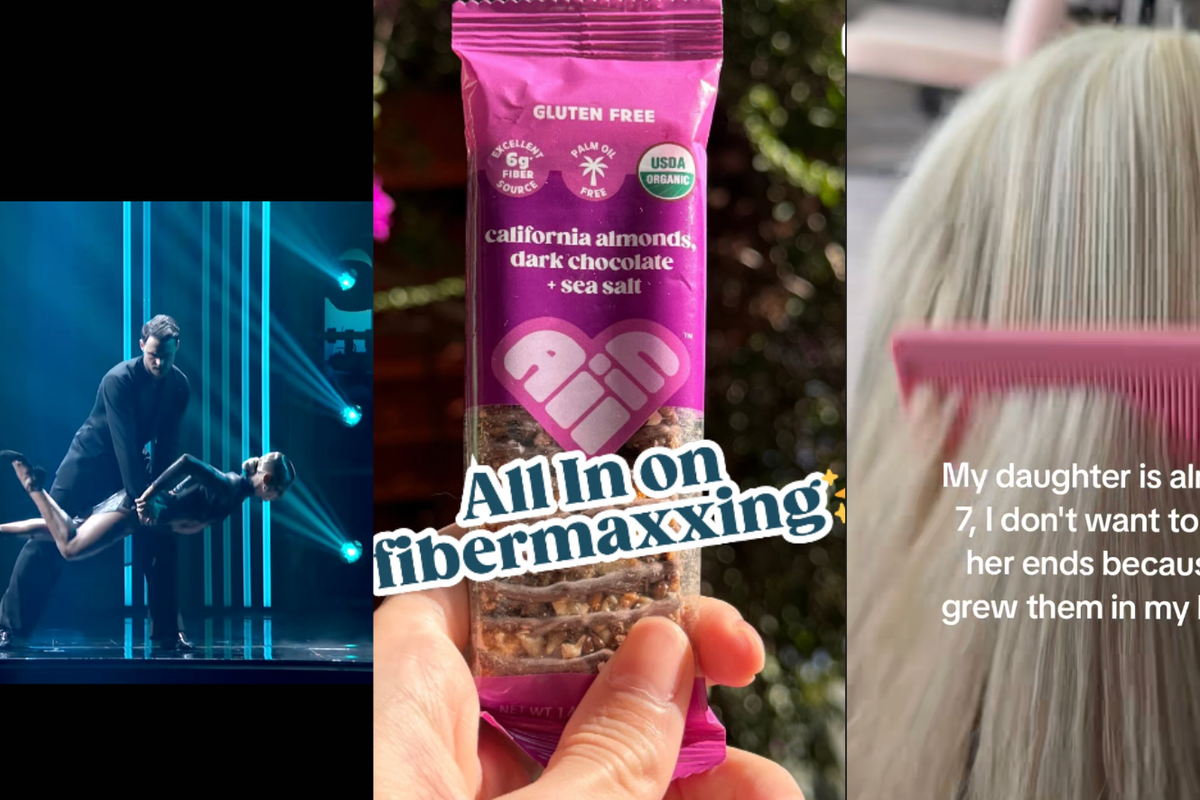Ryan Reynolds trolled Hugh Jackman on the opening night of his Broadway show 'The Music Man'
These antics just never get old.

We never want them to become friends.
Ah, Ryan Reynolds and Hugh Jackman. No 'celebrity feud' has been this entertaining since the days of Bette Davis and Joan Crawford. Unlike Davis and Crawford, however, the war between Jackman and Reynolds is nothing but friendly fire.
Before starring together in the billion dollar cinematic hit Deadpool and Wolverine, the pair spent years playing jokes on each other and having a good-natured series of laughs at each other's expense.
Who could forget their People’s Sexiest Man Alive shenanigans? Or their fake political ads against one another in 2018? I mean, these are some grade A, next-level types of pranks here.
So is it any surprise really, that on opening night of “The Music Man,” where Hugh Jackman would star as the titular character, that Ryan Reynolds wouldn’t behave himself? I think not. And we’d all be disappointed if he did, anyway.
Cut to opening night, as Jackman prepares to take the stage as con man Harold Hill. Jackman reveals in a hilarious tongue-in-cheek Instagram post that among the blessings of “gorgeous flowers, champagne and heartfelt wishes,” he also received Ryan’s gift … if you can call it that.
In Jackman's dressing room are two black-and-white portraits of Reynolds, one a sketch of him looking dapper while leering with arms crossed and the other a photo while he leaps in the air, sort of the same move Jackman does in the show. Perhaps one to intimidate, and the other mock? Who knows why mad men do what they do.
Attached is a note, with a passive aggressive pep talk from Reynolds.
“Hugh, good luck with your little show. I’ll be watching.”
Despite the jabs, however, Reynolds gave nothing but glowing reviews, calling the show “actually perfect.” But what he had to say about Jackman in particular was even more noteworthy.
“I don’t generally like to speak about @thehughjackman. Particularly in a positive light,” Reynolds wrote. “But his performance in @musicmanbway is one of the most electric things I’ve ever seen him do. The chemistry between [him] and @suttonlenore is off the charts.”

The only review of "The Music Man" that you really need.
I mean, if even Jackman’s infamous nemesis enjoyed it, this show has to be really something, right?
During an interview in 2020, Jackman told The Daily Beast, "It's gone back so long now … God, this is a classic sign where your feud has gone too long, where you don't even know why or how it started," regarding the playfully tumultuous relationship he shared with Reynolds.
But ask anyone, and I think they’ll tell you that we never want this delightful trolling to end.
This article originally appeared three years ago.
- Before she became a Broadway great, Audra McDonald survived a ... ›
- Hugh Jackman, real-life superhero, helped save swimmers from a ... ›
- Ryan Reynolds and Will Ferrell perform a late night guest spot ... ›
- Hugh Jackman posed with Wolverine claw at Music Man show - Upworthy ›
- People are loving this musical theater kid's car singalongs - Upworthy ›
- Watch Hugh Jackman and Ryan Reynolds' 'Hot Ones' interview - Upworthy ›
- Ryan Reynolds got a colonoscopy after losing a bet and found a lifesaving surprise - Upworthy ›




 Beaver on riverbank.
Beaver on riverbank.  Pbs Nature Swimming GIF by Nature on PBS
Pbs Nature Swimming GIF by Nature on PBS  An actual beaver dam on the now-thriving Price River
An actual beaver dam on the now-thriving Price River 

 a piece of paper with a heart drawn on it Photo by
a piece of paper with a heart drawn on it Photo by 
 A woman looking annoyed.via
A woman looking annoyed.via  An annoyed woman hugging another woman.via
An annoyed woman hugging another woman.via 
 An old America Online disc. via\u00a0Karl Baron/Flickr
An old America Online disc. via\u00a0Karl Baron/Flickr  Brittany Murphy in the 90s.
Brittany Murphy in the 90s.